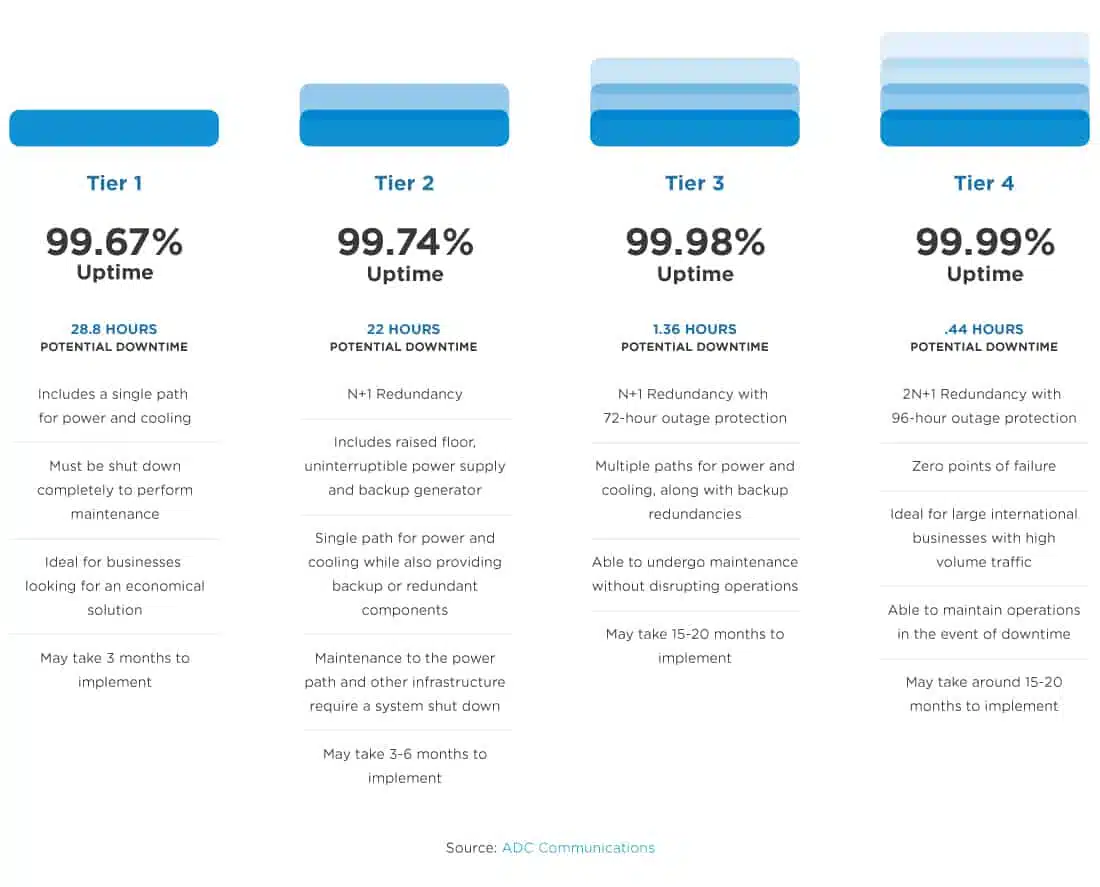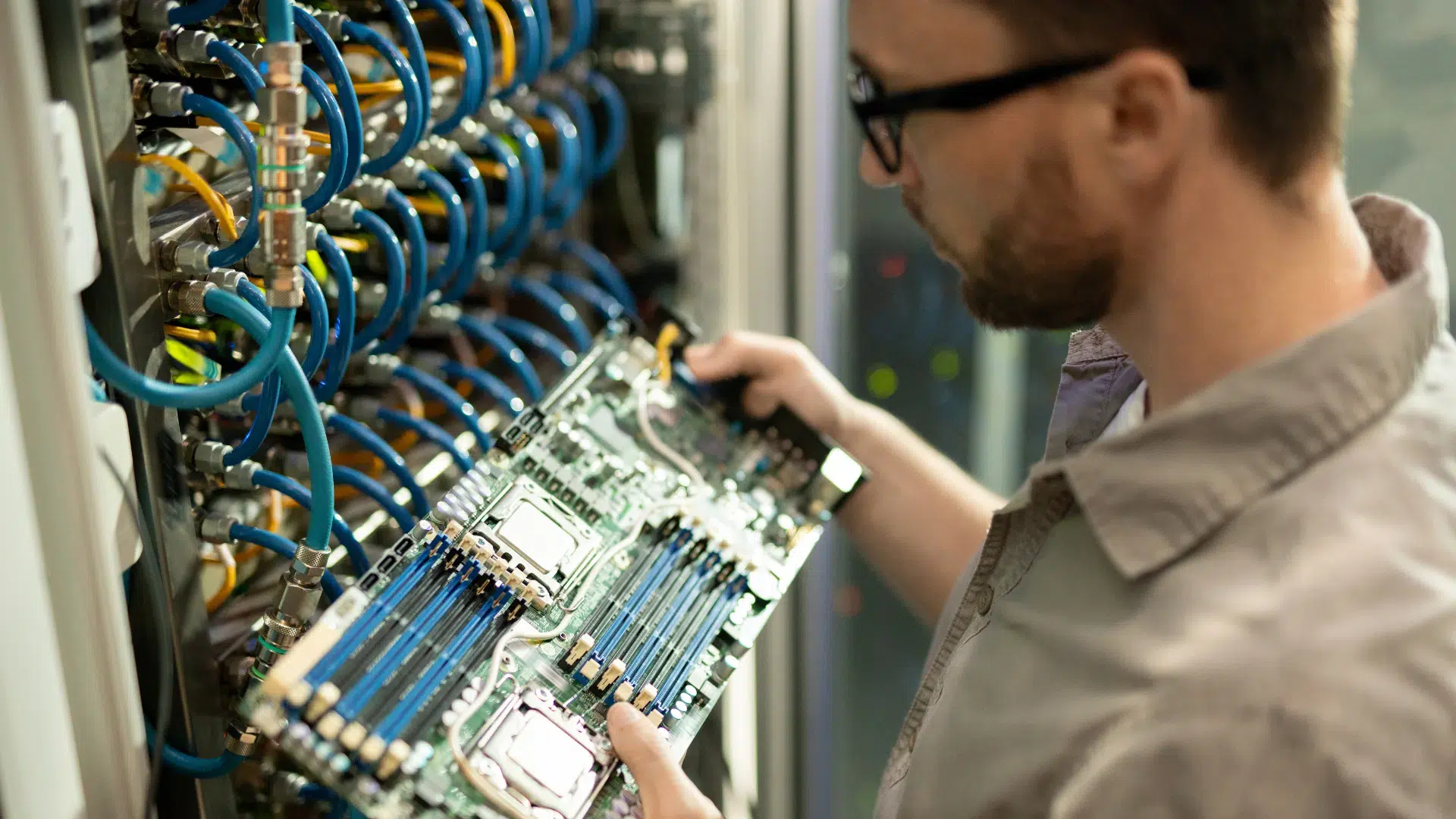Datacenter in today’s digital age rely on data more than ever. Whether it’s customer information, financial records, or website traffic statistics, data is essential for making informed decisions. However, all of this data must be stored and processed in a secure location. That’s where data centers come in. In this blog post, we’ll discuss what a data center is and why it’s important for companies to choose the right one. We’ll also delve into the different levels of data centers, how they are classified, and what features they offer.
Datacenter in El Salvador: Are there Tier 3 data centers?
A data center is a facility that stores and manages computer systems and their components. It provides processing, storage and securely manages large volumes of data. These centers are crucial for businesses that depend on technology to function optimally and can be company-owned or outsourced to an external provider.
DataTrust is a Tier III data center in El Salvador. DataTrust is the first certified commercial data center open to companies willing to scale their business.
What is a Level 3 datacenter or a Tier III data center?
Tier 3 or Tier III data centers are a type of highly reliable data center that offers redundancy through multiple power and cooling distribution paths. It guarantees a minimum uptime of 99.982% and has backup components for each critical system (N+1 redundancy). In addition, it can be maintained without affecting operations (concurrently maintainable).
Why is tiering important for datacenter?

The importance of tiering for data centers lies in defining the level of reliability and availability. It standardizes the industry, allowing users to better understand data center capabilities. Higher tiers require more redundancy, which means higher construction and maintenance costs. Choosing the right tier classification is crucial to making informed decisions about data center requirements.
Data centers: important aspects to consider

Data center tiers, or Tiers, are a vital aspect of any IT operation. It is crucial to understand the differences between each tier classification before making an informed decision on which data center tier would best suit your business needs. Tier 1 provides basic infrastructure with limited redundancy, while Tier 2 provides enhanced infrastructure with partial redundancy. In contrast, Tier 3 provides high availability with N+1 redundancy and Tier 4 provides fault-tolerant infrastructure with 2N+1 redundancy. Therefore, choosing the right tier classification for your data center infrastructure design can help meet operational sustainability, greater uptime guarantees and minimize any potential downtime disruptions.
Uptime Institute Tier Standard System: An Overview
The world-renowned Uptime Institute has established a benchmark called Tier Standard System for designing and operating data centers. DataTrust has Tier 3, the highest level in El Salvador.
This system has four different levels, each with specific requirements related to redundancy, fault tolerance and availability. By adhering to this tiered standard, companies can demonstrate their reliability and certify their infrastructure design for improved operational sustainability. Periodic auditing ensures that data centers meet the required tier certification ratings at all times.
Why are data centers important for companies?

Data centers are vital to businesses, providing secure and consistent storage and processing of digital information. They enable organizations to operate their IT infrastructure with high uptime, ensuring continuous access to data and applications. The Uptime Institute’s system level standard helps maximize the potential of IT infrastructure by ensuring the highest levels of availability, efficiency and resilience.
Key factors to consider when selecting a data center
To ensure you make an informed decision when selecting a data center infrastructure configuration, consider several key factors. Choose one that is closest to your company’s location and target audience, as latency plays an important role in server performance. Look for one certified by the Uptime Institute; uptime and tier certifications act as benchmarks for reliability and operational sustainability. Scalability ensures that your chosen data center can meet your needs now and in the future. Staying online is crucial; therefore, opt for redundancy in power sources, cooling systems, generators or motors, backup modules, Internet connections, distribution paths with fault-tolerant mechanisms and more.
The impact of data center downtime and how to avoid those downtimes?

Downtime risks are a concern for any business that relies on a data center. When a failure or outage occurs, it can lead to financial losses and damage to your reputation. That’s why it’s essential to avoid downtime by maintaining and regularly monitoring your data center infrastructure design. Implementing redundancy and backup systems, such as redundant power, cooling and redundant distribution paths, can help avoid disruptions during an outage. Choosing the right location for your server configuration can also help minimize downtime risks. Partnering with a reliable data center provider such as DataTrust certified by the Uptime Institute or Tier Certification of Design Documents ensures greater uptime guarantees.
In summary
In conclusion, data centers are an essential part of modern businesses and offer numerous benefits. From scalability to security, they help ensure that your business runs smoothly. Whether you are looking for a Tier 1 or Tier 4 data center, it is important to consider key factors such as uptime, redundancy and efficiency. At our company, we offer customized solutions based on your specific needs and requirements. To learn more about our services or to discuss which data center tier is right for you, contact us today.

